After writing about a mileage currency that I wanted a greater opportunity to use, let's talk about a currency that I use all the time. Specifically, I'm talking about Cathay Pacific's Asia Miles. When I grew up my parents were solely collecting Asia Miles, and even though I have a more diversified portfolio of miles these days (to an extent – I wouldn't recommend over-diversifying), I still use Asia Miles quite often.
While Asia Miles aren't the best-value currency in many cases, you'll get by far the most award space if you're trying to fly Cathay Pacific in a premium cabin. And there are many reasons to fly Cathay Pacific in a premium cabin – they have one of my favourite business class products. There are also other reasons to use Asia Miles, such as getting cheaper fuel surcharges out of the U.S..
HeyMax brought onboard Cathay Pacific's Asia Miles as a transfer partner this week, so you'll be able to use your Max Miles for all of the below applications.
How to earn Cathay Pacific Asia Miles
Cathay Pacific Asia Miles are quite easy to come by. In the U.S., UK, Hong Kong, and Singapore, Asia Miles are an AmEx transfer partner, which means that you can easily transfer your Membership Rewards points to Asia Miles. If you reside in Hong Kong, there are plenty of shopping avenues that will earn you Asia Miles as well.
You can also transfer your Max Miles to Cathay Pacific as of this week, which is something the HeyMax team is very excited about.
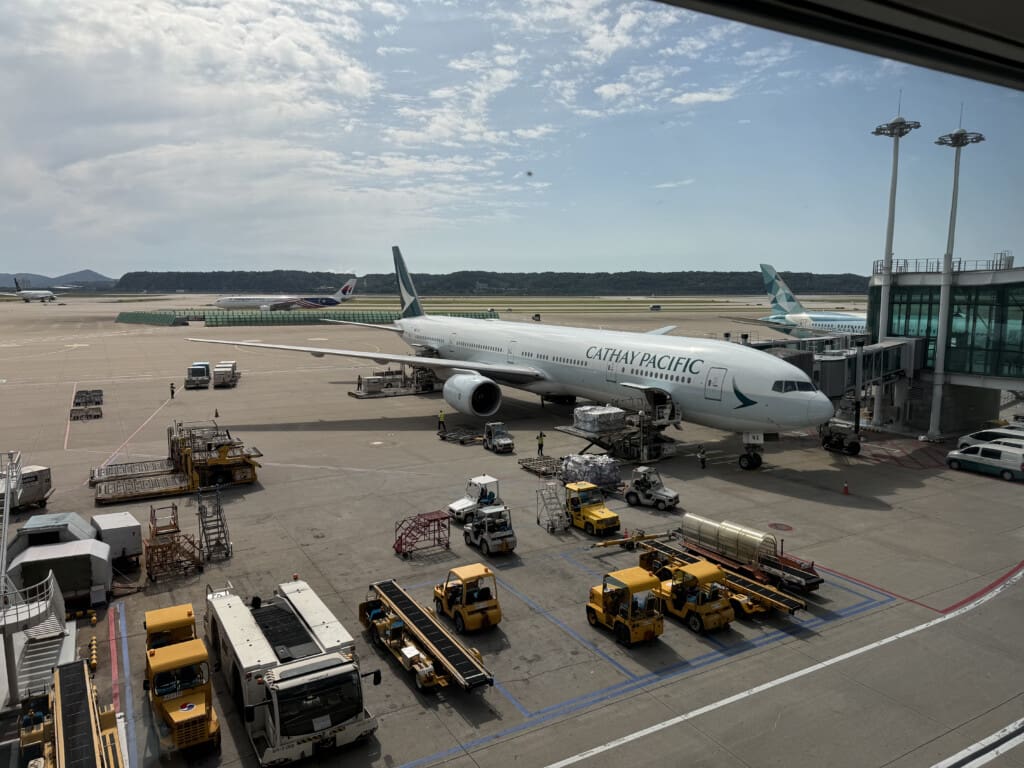
You do need to use Cathay Pacific miles every 18 months in order to keep them active, though that can include crediting a flight to Asia Miles, transferring points in from a credit card partner, or any other action that changes your overall Asia Miles balance.
Best ways to redeem Cathay Pacific Asia Miles
Cathay Pacific Asia Miles are similarly easy to redeem. Let me point out that Cathay Pacific's booking system has a handy award calendar where you can see an approximate indication of award seat availability for the month. Do note that this only applies to fully Cathay Pacific-operated itineraries, meaning that you can't see an indication of partner award availability until you actually click into the day-by-day booking system:
- Green means that there are 2+ award seats available for that date in that cabin class
- Gold means that there is only one seat left available for that date in that cabin class
- No seat means that awards involving a partner are available/none are available at all

Here are some of my favourite ways to redeem Cathay Pacific Asia Miles:
Redeem miles for Cathay Pacific business class
The single best use of Cathay Pacific Asia Miles is redeeming for Cathay Pacific business class. Why? That's because Cathay Pacific releases way more award space to its own programme than to any of its partners. While it's very rare to find an award seat in business class on Cathay Pacific if you're using Alaska Airlines, American Airlines AAdvantage, Avios, or Aeroplan points, I'd actually call Cathay Pacific award space using Asia Miles fairly abundant, especially when you're not trying to travel during peak season.
You can either travel on Cathay Pacific's own metal the whole way, or travel halfway and transfer to another Oneworld airline (British Airways has quite a few options, especially if you're willing to transit through India or the Middle East). Award tickets involving a partner cost 5,000 more Asia Miles regardless of the itinerary length or number of segments. Do note that you'll have to pay British Airways fuel surcharges if your itinerary involves a British Airways longhaul segment. Here's a review I wrote of my flight from Zurich to Hong Kong in Cathay Pacific's A350 premium economy, which you'll get on a majority of the airline's longhaul flights.
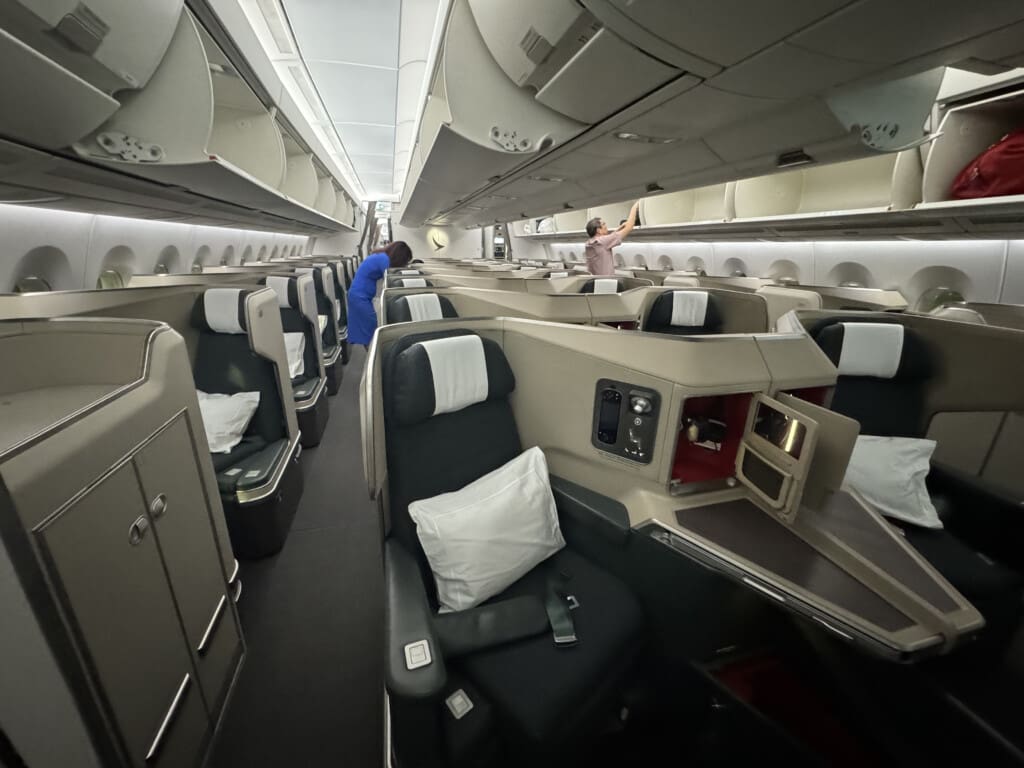
Let me put out there that there's usually plenty of award space for the Aria Suite, Cathay Pacific's newest business class product. Here's a review of a flight I flew from London to Hong Kong in that configuration. This product regularly flies to London, Frankfurt, Sydney, Melbourne, and Vancouver (no longer Beijing). Pricing for longhaul business class flights are as follows:
- Medium-haul flights from 2,751-5,000 miles cost 58,000 miles one-way (e.g. Sydney, Melbourne)
- Long-haul flights from 5,000-7,500 miles cost 84,000 miles one-way (e.g. London, Frankfurt, Vancouver)
- Ultra long-haul flights over 7,501 miles cost 115,000 miles one-way (e.g. New York, Dallas)
Do note that I would consider this seat just as good as, but not better than Cathay Pacific's older A350 seat, so I wouldn't go out of my way to book a flight on it.
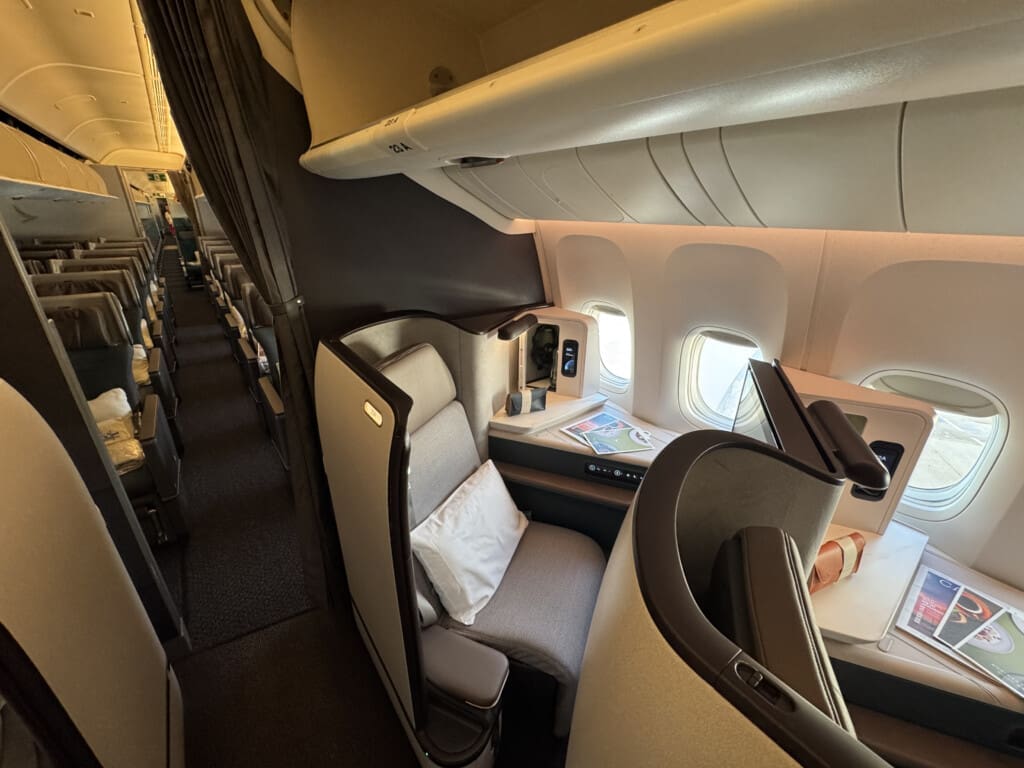
You can also fly shorthaul between destinations in Asia – you can book either Cathay Pacific, SriLankan Airlines, Japan Airlines, or Malaysia Airlines. Most destinations with a >2h flight time will cost you 28,000 Asia Miles, or 33,000 Asia Miles if you're flying a partner airline. I'd consider this to be roughly in line with using any other points currency if you're flying a partner airline, though Cathay Pacific also releases a lot more shorthaul award space to its own programme.

Generally if you're flying Cathay Pacific shorthaul, you'll want to keep your eyes peeled for a flight featuring the A350 or the 777-300ER – look out for a "359" or a "77W" under the "aircraft type" header when searching up flight details. Why? That's because your flight will feature Cathay Pacific's longhaul business class seats, as opposed to their far inferior regional business class seats, which are much more akin to premium economy.
Some A330s ("333") also feature longhaul seats, though those are usually much more prone to last-minute equipment swaps. If you'd like to check, make a dummy booking and head to seat selection, and see whether the seatmap features a 1-2-1 configuration.
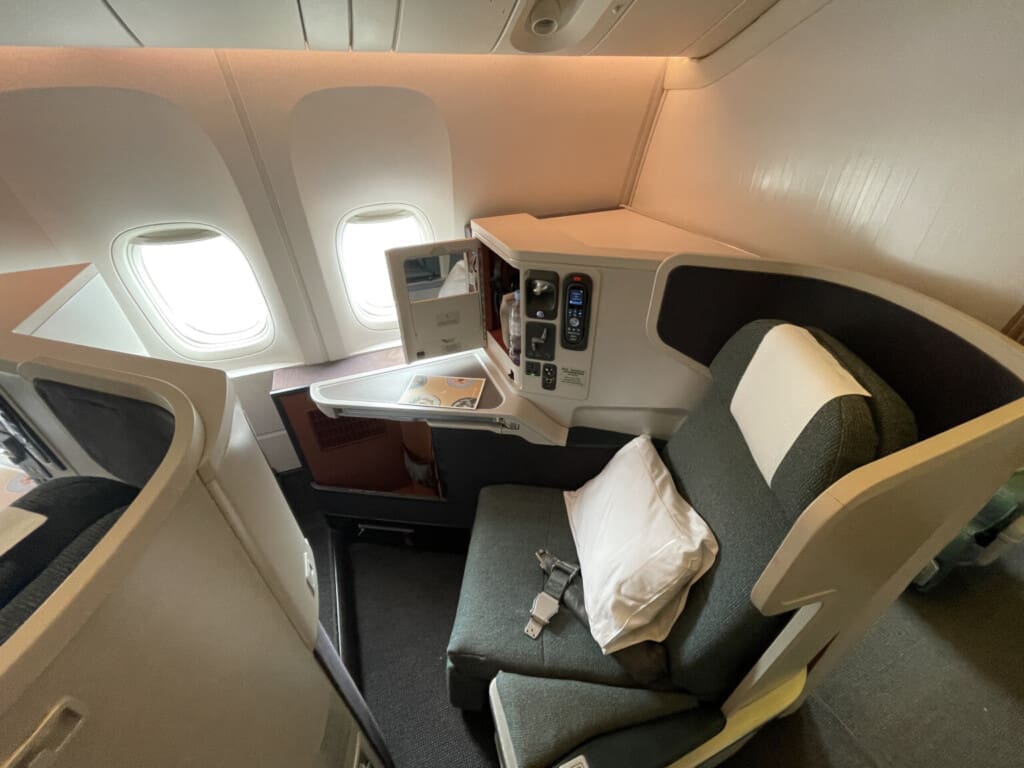
Unlike many other airline programmes, Cathay Pacific will only let you redeem two segments on a one-way itinerary, or up to four segments on a roundtrip itinerary. On a roundtrip, you can have one stopover, though you'll have to call to book it.
Redeem miles for Cathay Pacific premium economy
Similarly, Cathay Pacific also releases much more premium economy award space to its own programme than to other partners. While not the best in the market, I do like Cathay Pacific's premium economy, particularly because they feature a really good seat. Medium-haul flights (e.g. Sydney) will go for 38,000 miles one-way, long-haul flights (e.g. London) will go for 50,000 miles one-way, and ultra long-haul flights (e.g. New York) will go for 75,000 miles one-way. You can read a review of my flight in Cathay Pacific's newest premium economy here, and here's a review of a flight in their older A350 premium economy.
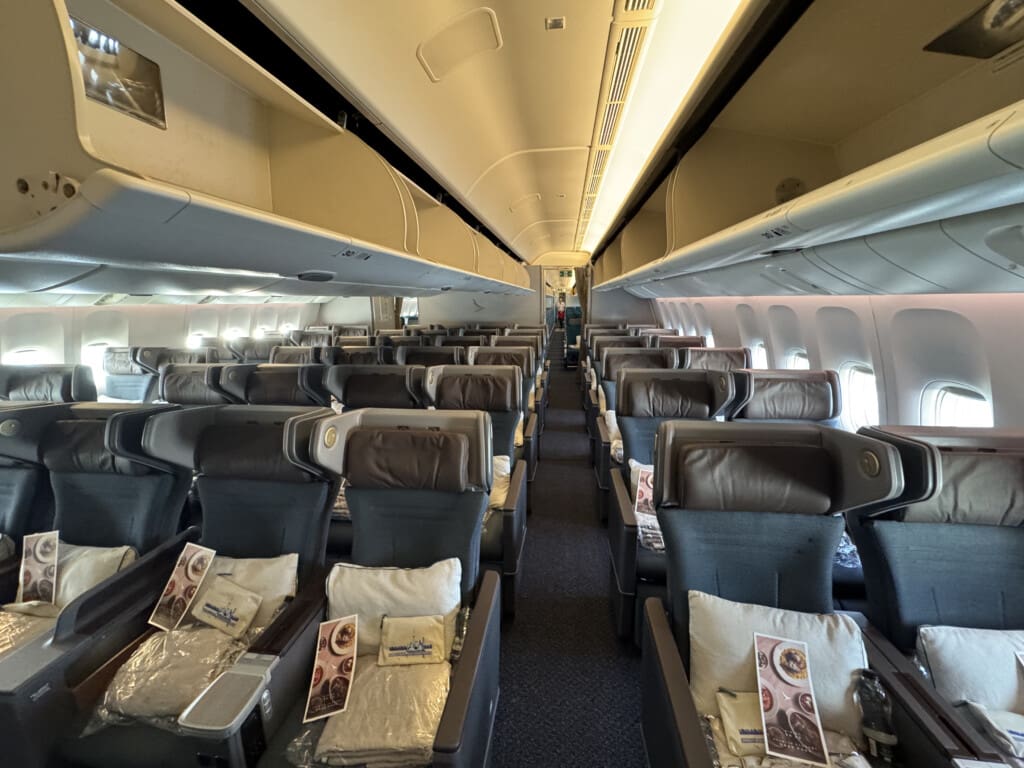
While I'm here, I might as well mention that Cathay Pacific only charges 27,000 miles for one-way economy awards between Asia and Europe. That's marginally, though still notably lower than using British Airways or AAdvantage miles.
Avoid fuel surcharges when booking ex-U.S. British Airways flights
One of the other best uses of Cathay Pacific Asia Miles is that you can save on fuel surcharges when you're booking British Airways flights out of the U.S., at least compared to booking through partner programmes.
For example, for a flight from Los Angeles to Florence, AAdvantage will only charge you 57,500 miles, though tacks on a £576.80 (HK$5,893) tax and fuel surcharge.

British Airways, on the other hand, only charges £250 in taxes and fees (HK$2,554), though the itinerary would cost a whopping 110,000 miles.

Cathay Pacific provides a happy medium, charging 89,000 Asia Miles and HK$3,523 (£345) in taxes and fees. Based on how much you value your miles, you might want to figure out which is the best for you.

This is consistent with most other itineraries that you'll find involving the U.S. (note that this is just the carrier surcharge, and doesn't include the APD). Cathay Pacific will consistently charge lower fuel surcharges than most other British Airways partners, though British Airways will charge more miles and less fuel surcharges. This is because of a late-2022 devaluation to British Airways' award chart, where they adjusted their fuel surcharges to keep the programme's appeal.
Fuel surcharge pricing is flat between Asia Miles and other partner programmes if your itinerary doesn't touch the U.S..

Redeem miles for Cathay Pacific first class
I can't not put this on here – Cathay Pacific first class is a treat to fly, and more readily available to Cathay Pacific's own frequent flyer programme than any of its partners. The catch is that even when using Asia Miles, it's quite difficult to find Cathay Pacific first class award space, due to the limited number of routes it's available on. You can usually catch stray first class award seats on Cathay Pacific to/from London, Paris, Milan, and/or New York during the off-season (I actually see the most first class award space between Hong Kong and London, as there are currently two frequencies operating to/from London with first class).
Pricing is 125,000 miles for longhaul flights, and 160,000 miles for ultra-longhaul flights.

Even with the large number of miles required, it's still "just" 5,000 more miles if you choose to fly first class on a partner airline.
What I wouldn't use Asia Miles for
I generally wouldn't use Asia Miles for the following applications:
- Booking shorthaul partner awards, especially in economy – the 5,000 mile surcharge for partner redemptions becomes much more significant on shorthaul awards
- Partner awards Europe-Asia – when fuel surcharges are the same, I'd compare pricing between carriers, such as with AAdvantage miles (e.g. in business class, you're looking at 75,000 AAdvantage miles vs. 89,000 Asia Miles)
- Using Asia Miles to pay for a hotel – I'd done this once or twice back when Asia Miles had a "hard" expiry date, though generally that represents a very low value per mile
Conclusion
Cathay Pacific Asia Miles are best used to fly Cathay Pacific's own premium cabins, due to how much Cathay Pacific restricts their award availability to partner programmes. That alone makes the programme worth keeping an eye on, since Asia Miles are so attainable. However, there are other good uses of Asia Miles as well, particularly if you fly British Airways to the U.S. often.
What are your favourite uses of Asia Miles?







